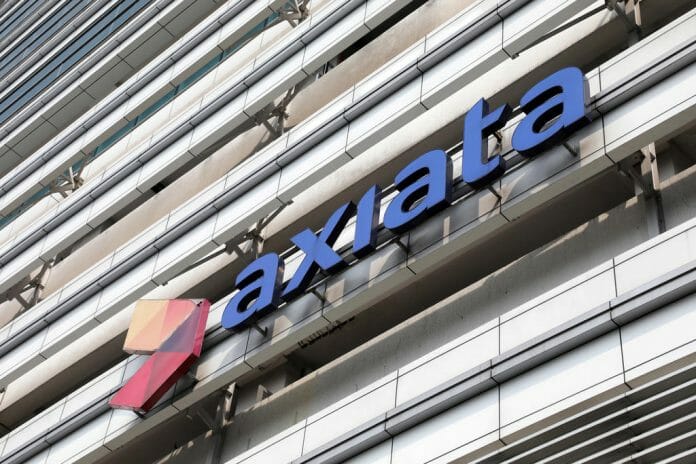Axiata Group Bhd’s plans to moderate its capex intensity for higher asset returns and unveiling of transformation of Link Net into FiberCo to capture future growth opportunities may be a cost drag in the near term during gestational stage, according to Kenanga Research.
Thus, the research house maintains its OUTPERFORM call, its earnings forecasts, and Sum-of-Parts TP of RM3.10, with no adjustment to its TP based on 3-star ESG rating.
Kenanga had attended Axiata’s Analyst and Investor’s Day recently, and came away feeling largely neutral as its ambitious growth plans are counter-balanced by high funding requirements.
It noted the takeaways include that the group still aims for sustainable dividends.
“Axiata aims to be a ‘multi-platform builder’ to achieve its aspiration to be a sustainable dividend company, comprising of digital telco (XL, Robi, Dialog, Smart, CDB), infrastructure (edotco and Link Net), and digital business (Boost, ADA, Axiata Digital Labs).
”Hence, this will enable the financial outcome of DPS of at least 10 sen p.a. (FY22: 14 sen), high single-digit annual shareholders’ return (FY22 ROE: 5.3%), and net debt/EBITDA of 2.5x (FY22: 1.1x),” it said.
Among the various strategies identified by the group to realize its targets includes to reduce HoldCo costs by circa 20% to end up with a smaller AXIATA HoldCo, to rebalance loans at frontier markets to reduce USD exposure, to pare down debt over 2024-26, and monetize infrastructure and digital businesses in 2025-26.
“The group is on track with its plans to evolve from a pure (legacy) telco to Telco-TechCo. One of the main targets under this strategy includes capex and opex savings from a reduction in cost/GB.
“Hence, this is expected to address the current trend afflicting telcos globally, where earnings growth lag behind capex investments. In other words, this implies that telcos are not deriving sufficient returns on their capital.
“Therefore, it targets to reduce its capex intensity for digital telco opcos to below 20%. In contrast, based on current traction, the group
forecasts that its mobile network capex would exceed 20% by 2026.
“As such, instead of growing network capex rapidly in the coming years, it plans to keep it flat. In particular, it targets to achieve data
margin of USD10 cents/GB by 2025,” Kenanga said.
Aside from that, the research house said, Axiata’s high capex intensity of 25% is attributed to low ARPU of USD2.3 derived from its Opcos at frontier markets.
T-Mobile group, for example, only has capex intensity of 18% given its significantly higher ARPU of USD10.6.
“Moreover, there is no compelling reason for Axiata to upgrade its capex, given that it is unable to monetize higher speeds from its customers. Thus, it plans to build a competitive network that is aligned to its customers’ needs of consistent and reliable experience, and value for money telco services,” it added.
It added the group revealed the structural transformation of XL and Link Net which entails transfer of Link Net’s 750,000 residential subscribers, and roll-out of an additional 2 million new homes passes by Link Net for XL.
“This is aligned with the group’s delayering strategy where XL becomes a ServeCo and Link Net transforms to a FiberCo. As ServeCo, XL will offer fixed-mobile converged offerings, whilst as Link Net as FiberCo will focus on delivering 8 million home passes to XL by 2026 (2023: 3.4m).
“The other layers within Link Net, comprising EntCo (provision of enterprise solutions) and MediaCo (media/content product offerings) remain status quo for now.”
However, growth does not come cheap, as the rollout of gestational fiber assets (for FibreCo) requires substantial capex.
“This is evident from FiberCo’s expectations that it will require peak funding of USD500 million-USD600 million in 2026 to deploy 4 million home passes.
“Therefore, moving forward, Link Net will further transform into a wholesale player that provides open access to other internet service providers aside from its anchor tenant, XL.
“On the flipside, roll-out of these gestational fiber assets requires substantial capex. Therefore, the group has plans to rope in investors in the future to fund Link Net’s growth plans,” it said.
The plan for FiberCo was due to the market gaps in Indonesia as it has low fixed broadband penetration of 15% (Malaysia: 48%) but internet penetration (mainly via mobile) at Indonesia is substantially higher at 78% in 2022-23.
“This translates to growth opportunities for XL and Link Net,” the research house said.
The risks to Kenanga’s call include a strong USD may weigh on the performance of its OpCos at frontier markets, further interest cost drag from continuous rate hikes, and macro headwinds weighing on Opcos at emerging markets









